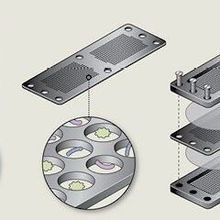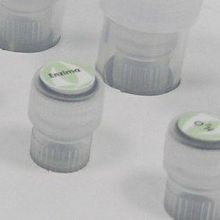Login
Subscribelab tools

2022 Top 10 Innovations
The Scientist | Dec 12, 2022 | 10+ min read
This year’s crop of winning products features many with a clinical focus and others that represent significant advances in sequencing, single-cell analysis, and more.

CRACK Method Reveals Novel Neuron Type in Mouse Brain
Dan Robitzski | Apr 18, 2022 | 3 min read
A new technique reveals cells’ precise locations and functions in the brain. Its developers have already used it to identify a previously unknown neuron type.

Improving Reproducibility with Automated Liquid Handling
The Scientist Creative Services Team in collaboration with Eppendorf | 2 min read
Automated liquid handling reduces manual labor and improves precision, reproducibility, and throughput.

Infographic: Simultaneously Studying Neuron Structure and Function
Dan Robitzski | Apr 18, 2022 | 1 min read
A new methodology combines existing techniques to reveal the specific function and location of multiple types of neurons at once.

Microbiologist Thomas Brock Dies at 94
Lisa Winter | Apr 23, 2021 | 2 min read
Brock’s discovery of a thermophile bacteria at Yellowstone National Park in 1966 eventually enabled the development of PCR.

Transforming Multichannel Pipettes
The Scientist Creative Services Team in collaboration with Eppendorf | 2 min read
Multichannel pipettes with adjustable tip spacing increase the efficiency and reproducibility of high-throughput experiments.

Q&A: A Molecular Toolkit to Build SARS-CoV-2 Research Capacity
Asher Jones | Mar 3, 2021 | 6 min read
Sam Wilson discusses a user-friendly set of resources that he and his collaborators developed to aid labs pivoting to study COVID-19.

New Tissue Clearing Methods Offer a Window into the Brain
Andy Tay | Oct 1, 2019 | 7 min read
Researchers are developing a variety of approaches for clearing neural tissue to get a better view of the brain’s circuitry.

Contending with Resistance in Cancer Immunotherapy
Marissa Fessenden | Apr 1, 2019 | 7 min read
Researchers describe ways to study how cancer cells evade therapies that harness the immune system.

The Dark Matter of the Human Proteome
Annie Rathore | Apr 1, 2019 | 10 min read
Advances in the functional characterization of newly discovered microproteins hint at diverse roles in health and disease.

Researchers React to Microsoft’s Acquisition of GitHub
Anna Azvolinsky | Jun 7, 2018 | 4 min read
Computational biologists are optimistic that the purchase of the world’s largest hub for open-source computer code will not affect the way they use GitHub for science.

Using Mimics to Get Around Antibodies’ Limitations
Devika G. Bansal | Jun 1, 2018 | 7 min read
Synthetic and natural alternatives to traditional antibodies offer more control, specificity, and reproducibility.

Computer Programs Sift Through Spikes in Nerve Cells’ Activity
Ashley Yeager | May 1, 2018 | 7 min read
Software that can separate signals from noise brings neuroscientists a step closer to understanding neurons’ patterns of communication.

Optical Cell Sorting
Rachel Berkowitz | Dec 1, 2017 | 7 min read
Researchers are using light and new image processing tools for label-free cell characterization.

Building Better Reagents
Jane McLeod and Paul Ko Ferrigno | Jan 31, 2016 | 3 min read
Facing problems of inconsistent, time-consuming, and costly antibody production, some researchers are turning to alternatives to target specific proteins of interest, in the lab and in the clinic.

Cultural Riches
Anna Azvolinsky | Sep 30, 2015 | 1 min read
Researchers devise new techniques to facilitate growing bacteria collected from the environment.

CRISPR 2.0?
Jef Akst | Sep 28, 2015 | 2 min read
A pioneer of the gene-editing technique discovers a protein that could improve its accuracy.

Merck Buys Sigma-Aldrich for $17B
Kerry Grens | Sep 22, 2014 | 1 min read
Two giants merge as the German drug maker acquires the US-based science supply company.

Insertional Mutagenesis from a Viral Vector
Josh Roberts(jroberts@the-scientist.com) | May 8, 2005 | 6 min read
Integrated viral sequences can dysregulate genes.
